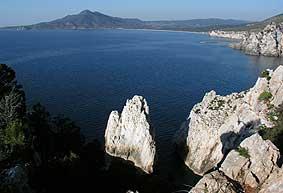


All the structures

The province of Carbonia-Iglesias is especially known for its coal deposits, which led to the opening of many mines.
The two castles at the Serbariu mines have become the symbol of this legendary territory. After the discovery of the Serbariu deposits, Carbonia was founded in order to create a community that worked for the mine. 1938 is the date that marks the founding of Carbonia. The town was officially inaugurated on 18th December of that year. Therefore Serbariu, which dates from the mid-1800s, has older origins than Carbonia.
Serbariu is noted for having kept its characteristic appearance until today. Despite the passing of time it wants to remain a village that safeguards the authentic aspects of its buildings and its countryside traditions.
Mount Sirai is located just three kilometres from Carbonia and is one of the most interesting archaeological areas in the Italian peninsula. Visits can be made to both the inhabited town with its neighbourhoods, squares and churches, and to the necropoli and hypogea.
The town of Iglesias also has a very ancient history, which the pit tombs, the Domus de Janas (chamber tombs) and the nuraghi all demonstrate.
The history of Iglesias is closely linked to the highly productive mines in the area.
Lead, silver and zinc mining were widely practised during Carthaginian and Roman times and brought prosperity to the town.
But the era of Iglesias’ greatest wealth was during the thirteenth century when the Cagliari lands were divided and it became firstly the domain of Count Ugolino della Gherardesca of Donoratico, before coming under the direct sovereignty of Pisa in 1302.